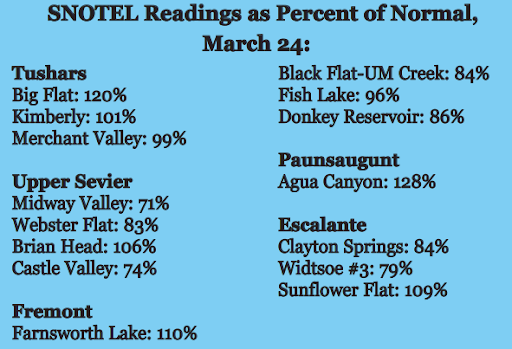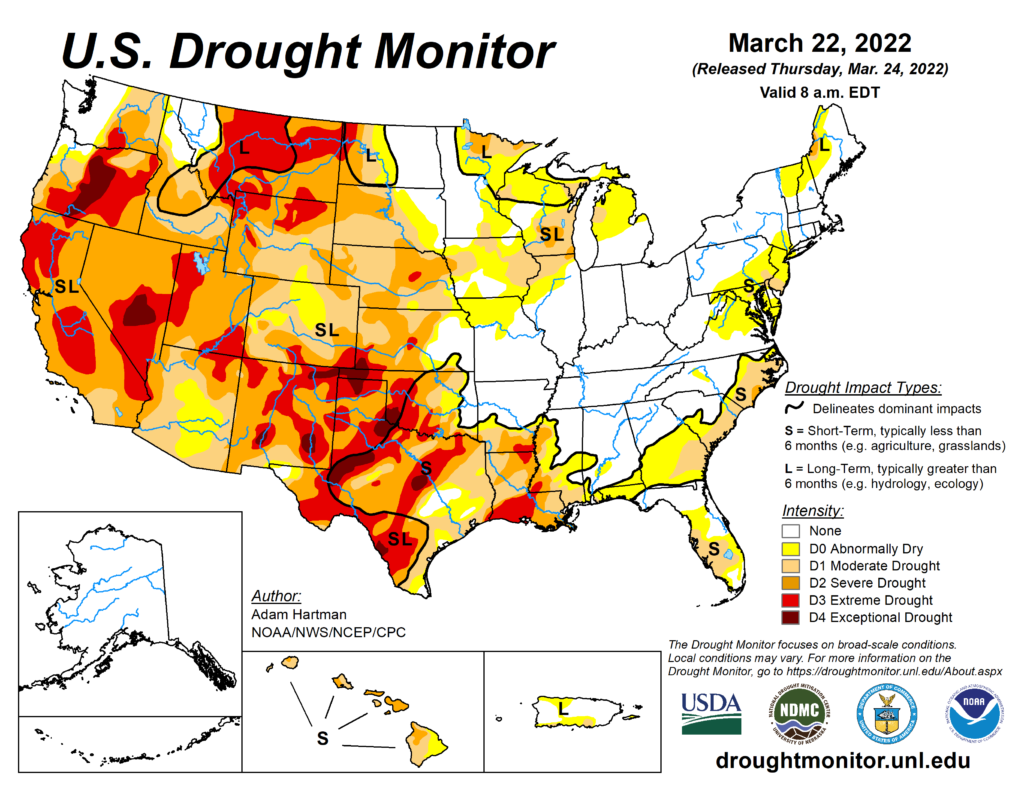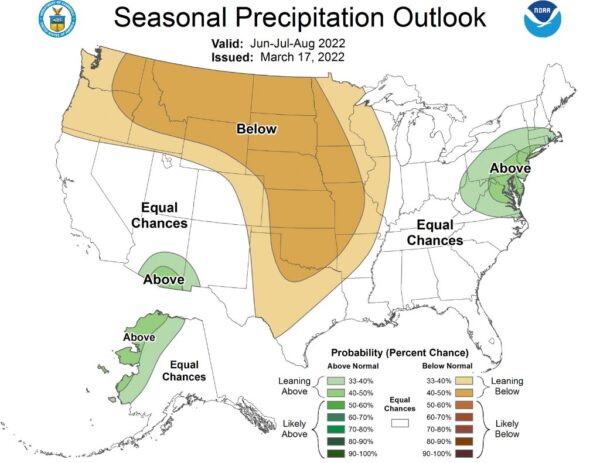A megadrought as reported by the New York Times last year is not just a one-year lack of water, but an expected 10 years of various cycles of low water.
Scientific researchers and a federal agency are putting out a warning that much of the United States faces hot, dry conditions this summer.
Our country’s heartland which produces most of our grain will be at the eastern edge of the drought. What that will mean to grain production remains to be seen.
This water shortage has plagued California and other Western states for the last two summers now, and the National Oceanic and Atmospheric Administration’s Spring Outlook provides an unimpressive climate forecast.
This summer continues 22 years of what experts say is the worst drought in North America since about 800 A.D., according to a study which cited an analysis of tree rings by Nature Climate Change.
It’s what we in the West have been experiencing for some time now. Jason Smerdon, one of the scientists at Columbia University, told NBC, ”It’s a slow-motion train wreck. When you have worse and worse droughts, that are close together that leaves little or no time to recover.”
More recently, nearly 60 percent of the United States has been experiencing drought conditions which is the largest drought since 2013. The drought is expected to improve east of the Mississippi but continue in the West.
Locally some areas show a slight improvement in snow pack for this year, compared to last year, and soil moisture levels are much better than last year. Sevier River Water Users Association reports percentages of normal snowpack to be slightly below normal for many areas in Wayne, Garfield and Piute Counties.
The Utah Legislature allocated money that could be used for new and existing water projects, but most of that money will go to the Great Salt Lake and Utah Lake. There is a lot of talk about building some water storage facilities in smaller areas, with the money given out by the federal government this year. This could help us through droughts of this magnitude but reservoirs can’t be built in a day, even if you have the funding. Long-term planning is necessary when tackling projects of this magnitude.
Although conservation helps, we have to accept the fact that we live on the edge of a desert and prepare for more drought in the future. Water storage facilities could be a wise strategy in helping to prepare for future drought conditions.
– The Byway


Courtesy of University of Nebraska – Lincoln.
Feature image caption: The summer precipitation outlooks shows below average rainfall for much of the northwest and equal chances of below or above for Utah.
Read about ways to conserve water during the drought in What You Can do to Conserve Water.

